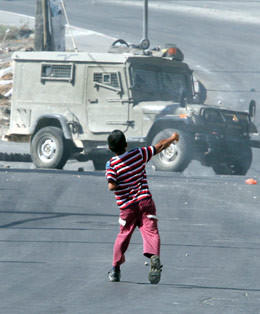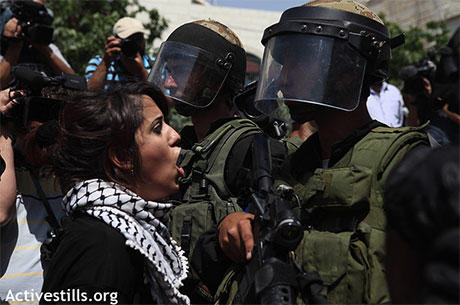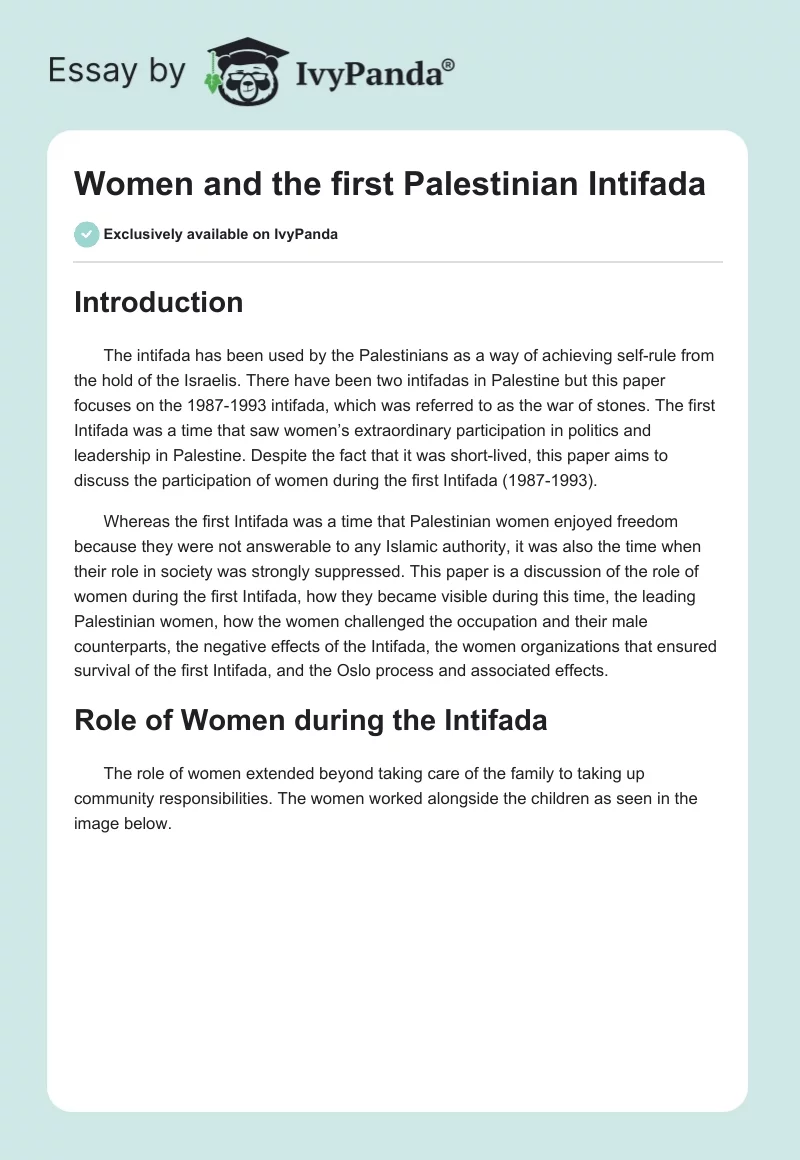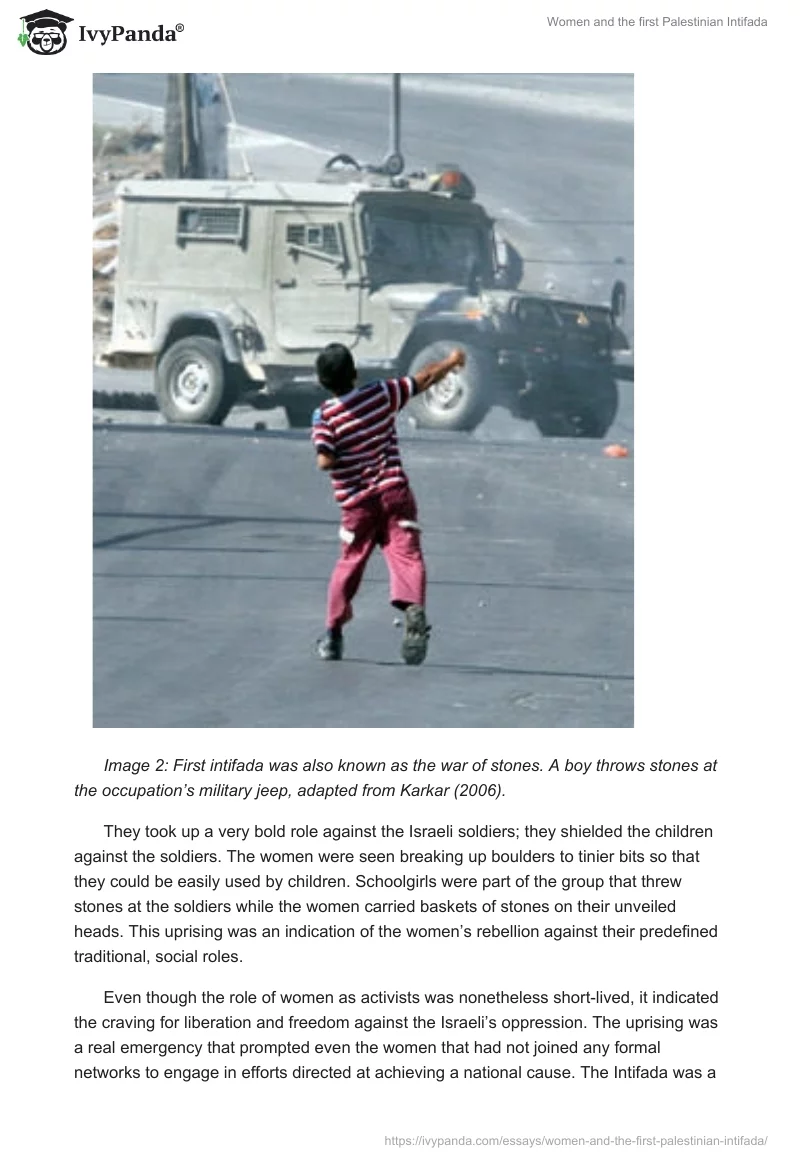Introduction
The intifada has been used by the Palestinians as a way of achieving self-rule from the hold of the Israelis. There have been two intifadas in Palestine but this paper focuses on the 1987-1993 intifada, which was referred to as the war of stones. The first Intifada was a time that saw women’s extraordinary participation in politics and leadership in Palestine. Despite the fact that it was short-lived, this paper aims to discuss the participation of women during the first Intifada (1987-1993).
Whereas the first Intifada was a time that Palestinian women enjoyed freedom because they were not answerable to any Islamic authority, it was also the time when their role in society was strongly suppressed. This paper is a discussion of the role of women during the first Intifada, how they became visible during this time, the leading Palestinian women, how the women challenged the occupation and their male counterparts, the negative effects of the Intifada, the women organizations that ensured survival of the first Intifada, and the Oslo process and associated effects.
Role of Women during the Intifada
The role of women extended beyond taking care of the family to taking up community responsibilities. The women worked alongside the children as seen in the image below.

They took up a very bold role against the Israeli soldiers; they shielded the children against the soldiers. The women were seen breaking up boulders to tinier bits so that they could be easily used by children. Schoolgirls were part of the group that threw stones at the soldiers while the women carried baskets of stones on their unveiled heads. This uprising was an indication of the women’s rebellion against their predefined traditional, social roles.
Even though the role of women as activists was nonetheless short-lived, it indicated the craving for liberation and freedom against the Israeli’s oppression. The uprising was a real emergency that prompted even the women that had not joined any formal networks to engage in efforts directed at achieving a national cause. The Intifada was a gate-pass through which women were able to take part in societal roles. Despite the fact that women continued to take part in their traditional roles, they also took up roles that had initially been dominated by their male counterparts.
Women worked collaboratively with the men, and this spurred great interest in issues affecting women, such as gender equality. Women took up leadership and coordination roles, ensuring that all the committees functioned properly by forming splinter organizations to address emerging problems, such as lack of basic commodities. The women filled up the men’s roles after they were jailed or exiled to sustain their nationalism-driven roles of addressing reality needs.
Women developed and maintained victory gardens and exchanged information and ideas on how to cope and survive during the food crisis. Women ensured that “vegetables, fruits, ice cream, biscuits, jams, and animal produce” were available (Levene, 2011, par 6). They were involved in proper management of the food to ensure that it was distributed even under tight curfews. The Intifada was a time when women made great strides towards social and political liberation. On a different note, it was a time when the hijab, which is believed to have strong religious and cultural meanings, was imposed on all women.
Visibility of Women during the First Intifada
Women were visible during the Intifada because they took up outstanding positions, which they had not taken up in the previous times. Their visibility was enhanced by the fact that the media captured their participation through television cameras. The ramifications of the Intifada had a “paradoxical effect on women’s visibility; women gained a political stance as they clashed with the Israeli soldiers and headed large masses in leadership podiums while at the same time, women committees emerged” (James, 2012, p. 20).
Enthusiasm was evident during the Intifada to the extent that it encouraged participation and enrollment of more women into the women’s committees. The involvement of the Palestinian women in politics was a stunning spectacle, such that many thought that these Palestinian women would not face the same fate as that of the Algerian women.
Women were more actively involved during the first Intifada than their male counterparts. During this time, women rebelled against the traditional form of wearing a headscarf, a trend that came into the spotlight as shown in the image below.

The headscarf is a symbol of submission, but during the first Intifada, the women appeared at the frontline in demonstrations and directly confronted the occupation forces without the hijab. However, it was not until this liberty came to an end when the Islamic groups demanded that all Palestinian women should wear the hijab, which does not hold any religious connotation but has been regarded as a form of subjugating the Palestinian woman.
The situation in Palestine is one that oppresses the woman, and the saddest part of it is that their fellow men counterparts are the ones that have placed them in such a position; the very same men that the women fought along with against the occupation to achieve independence. Therefore, the current situation calls for the need to survive and considers fighting for women’s rights as a luxury (Hillauer, 2005).
Leading Palestinian Women in the First Intifada
Zahira Kamal, who was Democratic Front’s second-generation, together with Siham Barghouti, a fellow partisan, were involved in the formation of the women action committees. Maha Nassar, who was a student leader in Birzeit University, was in the Popular Front and later became the head of the Palestinian Women’s Committees. It is important to note that Intifada efforts had begun prior to 1987 and during this time, women leaders like Samiha Khalil were actively involved in the activities of various national committees, for example, the short-lived National Guidance Committee.
Khalil secretively headed the illegal and inactive PLO Women’s Union and was the president of In’ash al-Usra, a charitable organization. Samia Khalil is referred to as a freedom fighter and a relentless revolutionalist in her own simple way. Khriesheh and Kamal were among the leaders of the three leftists groups and advocates of social women as part of the nationalist movement’s agenda. Just like Fateh Diab and Usra, these women were involved in fighting for the women’s rights. Khriesheh stated:
We not only want simply political rights but also to use political rights to get our social rights. She (the woman) should have the right to choose who she marries and divorces, whether to finish her education. She should have the right-let me call it-to practice her humanity (Kawar, 1996, p. 104).
Basically, the leaders of these leftists groups aimed to achieve freedom of expression.
These women leaders organized day trips where women would take part in activities other than the usual household routines. These day trips were an opportunity for the women to get training and encourage each other. They also mobilized more women to take part in their activities of nation-building. The women leaders campaigned against unequal wages for women due to the male-dominated labor unions (James, 2012).
In addition, these women advocated for payment even during the International Women’s Day, which was deemed a holiday. Hanan Ashrawi, initially, was an observer of the activities of the Women’s Committees and the associated women leaders. Later on, she became an active participant of the activities executed by the women leaders. Ashrawi was involved in visiting factory owners regarding these issues of unequal wages and honoring the International Women’s Day as a paid day. These women leaders were highly regarded leaders as speakers in press conferences, universities and other gatherings (Kawal, 1996). Ashrawi and Suad Amiry were part of the Palestinian negotiating team.
How Women challenged the Occupation and Arab Men
Despite the fact that women were actively involved in the uprising, the political wheel was steered by the men. The Palestinians realized that mass civil disobedience was the greatest power in the fight against the Israelis. “Boycotting Israeli goods, refusing to pay taxes, establishing their own mobile clinics, providing social services, organizing strikes and demonstrations and unarmed confrontations” took the occupation by surprise (Karkar, 2007, par. 5). The images of young girls throwing stones at the Israeli’s armored tanks were typical of the David and Goliath story. Even after being maltreated by the occupation through beatings, imprisonment, sexual threats, and rape, the women continued to defy the occupation authorities.
The women, who were always operating under the winds of their men counterparts engaged in activities that solely belonged to men, and this threatened the position of the man in society. Women took up supportive roles that helped to sustain the first Intifada, and without their great input, the first Intifada would not have been a success. During this Intifada, the men, who were the breadwinners, were imprisoned or unable to work.
The women became the breadwinners, but the paradox in all this is that the women supported a national cause that was not ready to support them: a strong form of betrayal. On a different note, various literal works have pointed out that men appreciated the efforts of the woman as it was deemed part of nation-building until the Oslo Accords came into existence. Even after the ban of the neighborhood committees, the women continued to offer education without the knowledge of the occupation despite knowing they were vulnerable to raids and beatings. Education was an avenue towards self-realization that was meant to empower the woman and resist the violence that sipped into various domains of the society.
The women acted against the highly held traditional norms to take up night guarding roles. The women took up active roles during the demonstrations to the extent of supplying the shebab with ammunition. The first Intifada was the only form of uprising when the women were actively involved in violent acts.
Negative Effects after Intifada
The very same cause that the women had strongly defended was the very same cause that thrust them into their shattered destiny. The Oslo Accords that gave power to Islamic movements resulted in suppression of the women and until today, there is minimal participation of Palestinian women in social and political positions. In addition, the women that were once held as prisoners are not given the gratitude they deserve; they are shunned away from society and are deemed as undesirable wives (Joseph et al. 2005). During the second Intifada, women took passive roles.
Despite the fact that the events following the Intifada suppressed the woman in the society, it shook off the highly held notion that women were only relegated to domestic work to care for their husbands and children. Therefore, the involvement of women in the first Intifada was a ray of hope that current day Palestinian women activists indicate that will be a touchstone for the anticipated democracy (Hillauer, 2005).
The Islamic movements that were established during the Intifada brought with them a restrictive conflation of women by imposing the hijab. Wearing the hijab was deemed to be a sign of national commitment, but in reality, this was a scheme by the Islam conservationists to use secularism and nationalism to gain power over women liberation committees. The women liberation efforts were not met well by a group of the Islamic society that sought to achieve religious power.
The events of the first Intifada led to an imposition of the hijab on the women. In the current day Palestinian community, 99% of the women wear the hijab while the other 1% faces resentment from the imposing Islamic groups. The women’s interests were shunned away and have been continuously disregarded in current day Palestinian society.
Women Organizations
The Palestinian women committees and women organizations stemmed from the Women Work Committee that was politically affiliated to the Democratic Front for the Liberation of Palestine (DFLP). Prior to the Intifada, most women did not join the women committees and organizations due to the notion that they held cultural, social, and political connotations. The Women Work Committee bore four other organizations on the basis of political affiliation, which was the means through which the women organizations could survive.
These included the Federation of Palestinian Women’s Action Committees (FPWAC) that was associated with the DFLP; the Union of Palestinian Working Women’s Committees (UPWWC) associated with the Palestine Communist Party; the Union of Palestinian Women’s Committees (UPWC) affiliated with the Popular Front for the Liberation of Palestine (PFLP); and the Women’s Committee for Social Work (WCSW) that supported Fateh. All these large committees were involved in empowering their fellow women and forming sub-committees that offered support during the Intifada as discussed herein.
Women took part in various committees that merely lasted for a year because their existence was banned in 1988. Women took part in home teaching committees that provided education services to make up for the ordered-closed schools. Rural women were taught on basic food production, accounting, and hygiene. These activities were regarded as initiatives towards economic independence in the words of Um Khalid, a prolific committee member and women’s rights activist:
Now I fell I am able to fight for my full right as a woman and as a human being. I am no longer just a housewife. No, I’m part of the workforce which is creating the direct change in my society…By being productive I can also be a full partner in establishing the structure of our society (cited in Levene, 2011, par. 14).
Emergency and health committees were established to help the injured. Agricultural committees helped to grow food in neighborhood plots. These committees largely prevailed in the refugee camps and aimed to achieve national economic independence and ensure local neighborhoods remained well-fed even during times of scarcity. As a result, the Palestinians were able to boycott produce from the Israelis and generate goods for themselves because local shops had been closed at the time.
Women committees and charitable organizations were part of the Palestinian institutions that helped to support the uprising. The women committees, alongside “student unions, merchants, and health service societies” were actively involved in the distribution of the secret communiqués of the Unified Leadership, consoled prisoners and their families during prison visits, made deliveries of the PLO funds for social relief, and took up a role similar to that of the sister’s work witnessed during the war in Lebanon (Hillauer, 2005, p. 113; James, 2012).
The Oslo Process and associated Effects
The Oslo Accords were negotiations between the Palestinian national movement and the Israelis on how the occupation would be withdrawn from Palestine while Norway took up the mediating role. These accords were formed with the aim of creating a Palestinian Self-Governing Authority in the West Bank and Gaza Strip during a transitional period of less than five years and eventually lead to permanent settlement (Neff, 1997). However, the Oslo Accords were erased after Binyamin Netanyahu, who held contempt for the Palestinian society, became the newly elected leader for the Israelis.
The Oslo peace process barely took the wind of the Intifada, and none of the actions agreed during the peace were executed. The Oslo peace process morphed the PLO, an organization that was actively involved in promoting nationalism and resistance against the occupation into PA, an institution that policed its own in order to secure a place at the negotiation table. While all the international resources were directed to the peace process, the real issues on the grounds were ignored and instead of withdrawing their forces from Palestine, more of these forces were set up. The Oslo process was a means through which the Israelis were able to manipulate the national organizations and discreetly take charge.
During the Oslo Accords, the Israeli confiscated more land belonging to the Palestinians and the Palestinians were monitored like never before. Palestinians were denied Jerusalem residency rights and they could only go where they were told to, and when they were told to go. The Israelis took advantage of the Oslo process to exert more military coercion that led to intensified curfews: the Palestinians were subjected to around 10 weeks of in-house curfew. In the process, they lost a means of livelihood as the Israelis started importing labor. The Palestinians now focused on survival as mass resistance became difficult to sustain.
Conclusion
It is no doubt that the first Intifada was the only time when women were actively involved in political, social, economic, and cultural activities. Nonetheless, this phase in time did not reverse the highly held traditional values and norms of the Palestinian society as seen in the current situation. The promise of the implementation of Oslo Accords led to a gradual disbandment of the organized resistance networks. The involvement of women in the first Intifada and the establishment of the various women committees left an impact that continues to smolder in the current hearts of the Palestinian women.
The fight against the occupation still lives on and even though the subsequent intifada entailed a lot of militarization, women took up the role of suicide bombers. This new role has led to a mixed reaction regarding the reformulated role of the current-day Palestinian woman. Whereas the rest of the world links this action to the sufferings of the women, some Islamists regard this action as heroic while other see it as relegation.
References
Hillauer, R. (2005). Encyclopedia of Arab women filmmakers. New York: The American University in Cairo Press.
James, M. K. (2012). Women and the Intifadas: the evolution of Palestinian Women’s Organizations. Strife Journal, 1, 18-22.
Joseph, S., Najmabadi, A., Peteet, J., Shami, S., Siapno, J., Smith, J. (Eds.). (2005). Encyclopedia of women and Islamic cultures: Family, law and politics. Laiden, The Netherlands: Koninklijke Brill NV.
Karkar, S. (2007). The first intifada 20 years later. Web.
Kawal, A. (1996). Daughters of Palestine: Leading women of the Palestinian National Movement. Albany: State University of New York Press.
Levene, S. (2011). What was he role of Palestinian women in the First Intifada? Web.
Musleh,M. (2012). Women’s activism in Palestine. Web.
Neff, D. (1997). The first Intifada erupts, forcing Israel to recognize Palestinians. Web.


